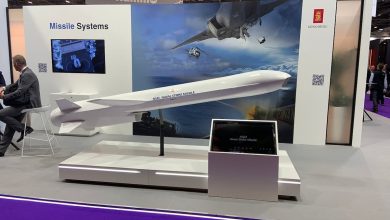Missile Defense Agency to pick hypersonic interceptor vendor this year

HUNTSVILLE, Ala. — The Missile Defense Agency is planning to choose a single vendor to deliver an interceptor capable of taking out a hypersonic weapon in its glide phase of flight, Lt. Gen. Heath Collins, the agency’s director, said Aug. 8 at the Space and Missile Defense Symposium.
“We will be making a down-select, resource-driven decision later this year,” Collins said.
“As we came into [FY]25, the Fiscal Responsibility Act … put pressure on the entire department to make really tough prioritization and resource-informed decisions,” Collins told Defense News in an interview at the conference. “We were no exception, so we had to take a look at how we balance and make decisions on the capability we bring.”
The MDA, as part of that assessment, decided to halt its SM-3 Block 1B production line and down-select a winning vendor earlier than planned — rather than carry two teams farther into the development process, which tends to drive down program risk — in a competition to build a Next-Generation Interceptor. Such munitions are designed to counter intercontinental ballistic missiles aimed at the homeland.
Raytheon Technologies and Northrop Grumman both won contracts to continue developing the Glide Phase Interceptor, or GPI, in June 2022. Each company was awarded a firm-fixed price modification to a previously awarded contract for rapid prototyping. Every modification is worth roughly $41.5 million, bringing the total contract value to around $61 million each.
The U.S and Japan signed a cooperative agreement in May to co-develop the GPI, with MDA’s budget plan envisioning a first fielding in the mid-2030s. Congress, meanwhile, has mandated MDA reach full operational capability by the end of 2032 and provide no fewer than 12 GPIs for tests by the deadline.
“We’ll have to assess the risk of that design, any corrective actions … or mitigation activities we want to take,” Collins said, discussing next steps after MDA chooses a single vendor. “And then we would re-baseline the program based on that with an updated, independent cost estimate … to inform that program.”
Hypersonic weapons are difficult to counter, not because of their speed, Collins said, but because their ability to maneuver in flight.
Some ballistic missiles are already able to fly at hypersonic speeds. The SM-6 missile currently in the inventory is capable of defeating hypersonic threats in the terminal phase of flight, but an interceptor capable of knocking out a hypersonic earlier in flight remains a high priority for the Defense Department.
Jen Judson is an award-winning journalist covering land warfare for Defense News. She has also worked for Politico and Inside Defense. She holds a Master of Science degree in journalism from Boston University and a Bachelor of Arts degree from Kenyon College.







